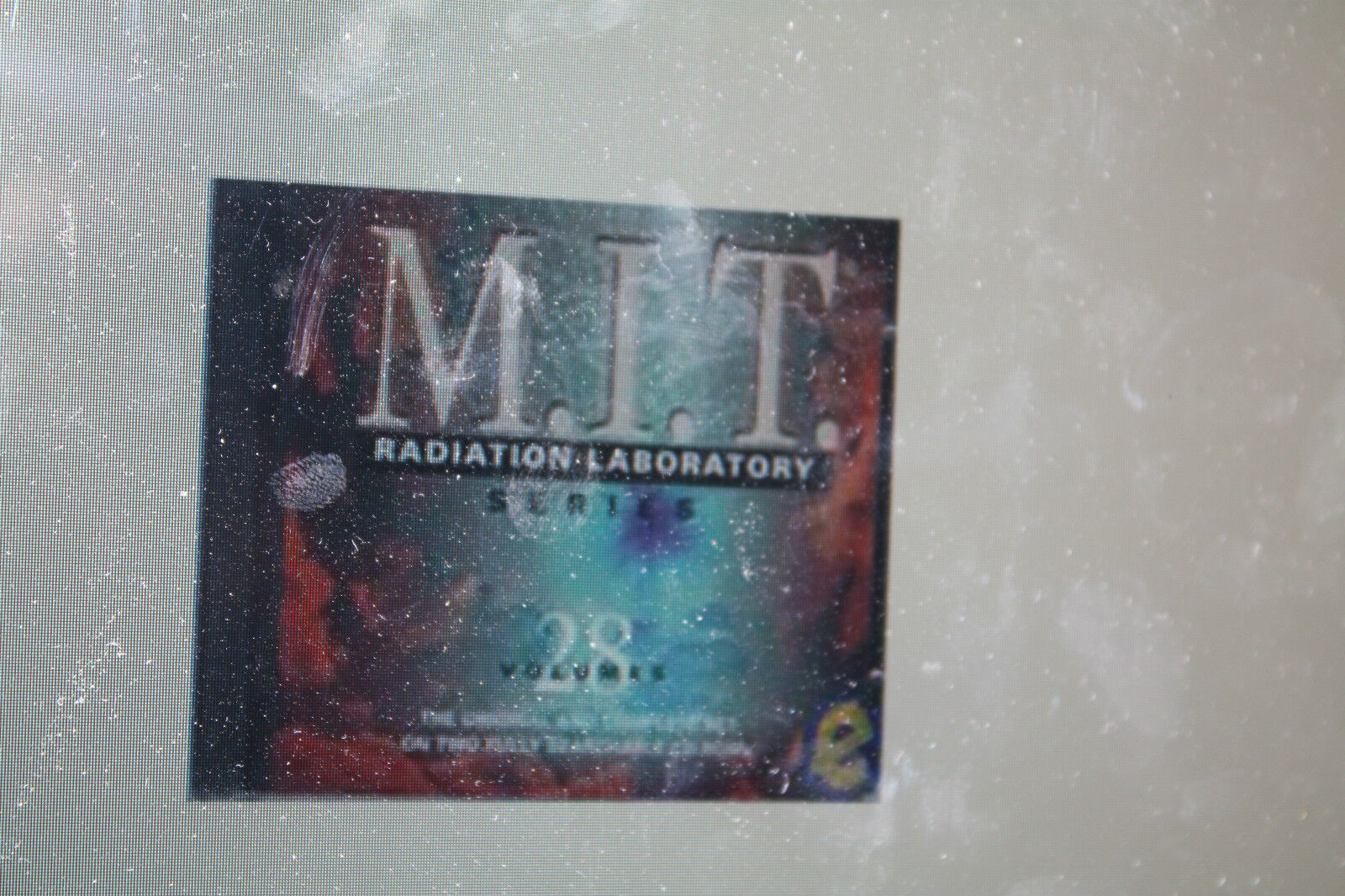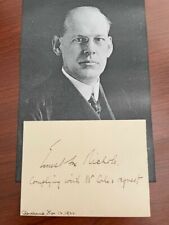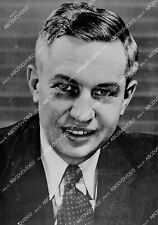MIT RADIATION LABORATORY SERIES 1947 - 1951 PDF on DVD (28 VOLUMES) For Sale

When you click on links to various merchants on this site and make a purchase, this can result in this site earning a commission. Affiliate programs and affiliations include, but are not limited to, the eBay Partner Network.
MIT RADIATION LABORATORY SERIES 1947 - 1951 PDF on DVD (28 VOLUMES):
$5.99
MIT Radiation Laboratory Series
1947 thru 1951
28 Volumes (Includes Index)
In Adobe PDF Format on DVD
Wonderful collection of WW2 Books on radar.
MIT RADIATION LABORATORY SERIES 1947 - 1951 PDF on DVD (28 VOLUMES) (#380403801890)
After the end of World War II, the United Statesgovernment continued to pay key people who had worked at the RadiationLaboratory for six months to enable them to write about their work.
From the forward of each book:
The tremendous research and development effort that wentinto the development of radar and related techniques during World War IIresulted not only in hundreds of radar sets for military (and some for possiblepeacetime) use but also in a great body of information and new techniques inthe electronics and high-frequency fields. Because this basic material may beof great value to science and engineering, it seemed most important to publishit as soon as security permitted.
However, an altruistic drive to publish the Lab\'sachievements in open literature was not the only impetus.
As C. C. Bissell observes: The imposing 27-volume [sic]Radiation Lab Series was not only a technological statement, but also apolitical statement about the role the United States was to play in thepost-war world that in the post-war world the United States would be theintellectual driving force of science and technology, as well as the economicand political super power.
The most interesting volumes to control engineers arevolumes 21 and 25. The twenty-eight volumes are:
1. Louis N. Ridenour. Radar System Engineering, volume 1 of MITRadiation Laboratory Series. McGraw-Hill, New York, 1947.
2. John S. Hall.
Radar Aids to Navigation, volume 2 of MIT RadiationLaboratory Series. McGraw-Hill, New York, 1947.
3. Arthur Roberts.
Radar Beacons, volume 3 of MIT Radiation Laboratory Series. McGraw-Hill, New York, 1947.
4. J. A. Pierce, A. A. McKenzie, and R. H. Woodward.
Loran, volume 4 of MIT Radiation Laboratory Series. McGraw-Hill, New York, 1948.
5. G. N. Glasoe and J. V. Lebacqz.
Pulse Generators, volume 5 of MIT Radiation LaboratorySeries. McGraw-Hill, New York, 1948.
6. George B. Collins.
Microwave Magnetrons, volume 6 of MIT Radiation LaboratorySeries. McGraw-Hill, New York, 1948.
7. Donald R. Hamilton, Julian K. Knipp, and J. B. HornerKuper.
Klystrons and Microwave Triodes, volume 7 of MIT RadiationLaboratory Series. McGraw-Hill, New York, 1948.
8. C. G. Montgomery, R. H. Dicke, and E. M. Purcell.
Principles of Microwave Circuits, volume 8 of MIT RadiationLaboratory Series. McGraw-Hill, New York, 1948.
9. George L. Ragan.
Microwave Transmission Circuits, volume 9 of MIT RadiationLaboratory Series. McGraw-Hill, New York, 1948.
10. N. Marcuvitz.
Waveguide Handbook, volume 10 of MIT Radiation LaboratorySeries. McGraw-Hill, New York, 1951.
11. Carol G. Montgomery.
Technique of Microwave Measurements, volume 11 of MITRadiation Laboratory Series. McGraw-Hill, New York, 1947.
12. Samuel Silver.
Microwave Antenna Theory and Design, volume 12 of MITRadiation Laboratory Series. McGraw-Hill, New York, 1949.
13. Donald E. Kerr.
Propagation of Short Radio Waves, volume 13 of MIT RadiationLaboratory Series. McGraw-Hill, New York, 1951.
14. Louis D. Smullin and Carol G. Montgomery.
Microwave Duplexers, volume 14 of MIT Radiation LaboratorySeries. McGraw-Hill, New York, 1948.
15. Henry C. Torrey and Charles A. Whitmer.
Crystal Rectifiers, volume 15 of MIT Radiation LaboratorySeries. McGraw-Hill, New York, 1948.
16. Robert V. Pound.
Microwave Mixers, volume 16 of MIT Radiation LaboratorySeries. McGraw-Hill, New York, 1948.
17. John F. Blackburn.
Components Handbook, volume 17 of MIT Radiation LaboratorySeries. McGraw-Hill, New York, 1949.
18. George E. Valley,Jr. and Henry Wallman.
Vacuum Tube Amplifiers, volume 18 of MIT RadiationLaboratory Series. McGraw-Hill, New York, 1948.
19. Britton Chance, VernonHughes, Edward F. MacNichol, Jr., David Sayre, and Frederic C. Williams.
Waveforms, volume 19 of MIT Radiation Laboratory Series. McGraw-Hill, New York, 1949.
20. Britton Chance, Robert I. Hulsizer, Edward F. MacNichol,Jr., and Frederic C. Williams.
Electronic Time Measurements, volume 20 of MIT RadiationLaboratory Series. McGraw-Hill, New York, 1949.
21. Ivan A. Greenwood, Jr., J. Vance Holdam, Jr., and DuncanMacRae, Jr.
Electronic Instruments, volume 21 of MIT RadiationLaboratory Series. McGraw-Hill, New York, 1948.
22. Theodore Soller, Merle A. Star, and George E. Valley, Jr.
Cathode Ray Tube Displays, volume 22 of MIT RadiationLaboratory Series. McGraw-Hill, New York, 1948.
23. S. N. Van Voorhis.
Microwave Receivers, volume 23 of MIT Radiation LaboratorySeries. McGraw- Hill, New York, 1948.
24. James L. Lawson and George E. Uhlenbeck.
Threshold Signals, volume 24 of MIT Radiation LaboratorySeries. McGraw-Hill, New York, 1950.
25. Hubert M. James, Nathaniel B. Nichols, and Ralph S.Phillips.
Theory of Servomechanisms, volume 25 of MIT RadiationLaboratory Series. McGraw-Hill, New York, 1947.
26. W. M. Cady, M. B. Karelitz, and Louis A. Turner.
Radar Scanners and Radomes, volume 26 of MIT RadiationLaboratory Series. McGraw-Hill, New York, 1948.
27. Antonin Svoboda.
Computing Mechanisms and Linkages, volume 27 of MITRadiation Laboratory Series. McGraw-Hill, New York, 1948.
28. Keith Henney, editor.
Index, volume 28 of MIT Radiation Laboratory Series. McGraw-Hill, New York, 1953.
The Radiation Laboratory, commonly called the Rad Lab, waslocated at the Massachusetts Institute of Technology (MIT) in Cambridge,Massachusetts (US) and functioned from October1940 until December 31, 1945. Alfred Lee Loomis, a millionaire and physicistwho headed his own private laboratory, selected the location for the laboratoryon the campus, named it the MIT Radiation Laboratory, and arranged funding forthe Rad Lab until federal money was allocated. It was formed by, and initiallyoperated under, the National Defense Researc Committee (NDRC), a commissionestablished by U.S. President Franklin D. Roosevelt with Vannevar Bush as itschairman. In 1941, the NDRC was enlarged to become the Office of ScientificResearch and Development (OSRD), with Bush remaining as chairman. Lee A.DuBridge served as the Rad Lab director. This facility was responsible for developingmost of the microwave radars used by the United States during World WarII including the H2X radar used for bomb-aiming and thesubsequent improvements to the initial H2X radar\'s technology.
The Rad Lab also developed LORAN, the first worldwide radionavigation system, which originally was known as \"LRN\" for LoomisRadio Navigation, after Alfred Lee Loomis, who invented LORAN and played acrucial role in military research and development during WWII. It remained themost widely used long-range navigation system until the advent of GPS which wasdeveloped from it and became used by the public after 2000.
THIS IS A DVD WITH PDF FILE(S) AS DESCRIBED. THEY ARE VIEWABLE ON YOUR COMPUTERUSING ADOBE READER.

Related Items:
1942 Harvard Univ Radio Research Laboratory MIT Radiation Misc Ephemera WWII Vtg
$49.99
ERNEST FOX NICHOLS SIGNED NOTE, PHYSICIST, PRESIDENT DARTMOUTH & MIT, RADIATION
$150.00
crp-69920 1946 new head of CALTECH Dr Lee A DuBridge formerly radiation lab MIT
$11.99



